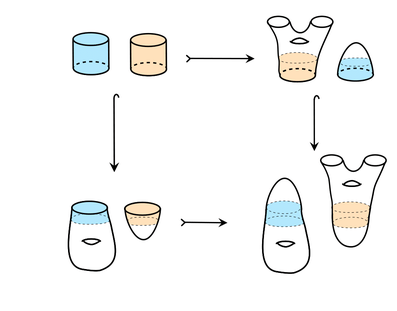Topology is the classification of spaces according to their coarse shape. Topological spaces can manifest themselves in many different and unexpected contexts: from a folded protein to a data cloud, from a two-dimensional surface (or, more generally, a finite-dimensional manifold) to the infinite-dimensional space of all possible knots. At CTA^2, we develop and compute algebraic invariants to distinguish topological spaces using methods such as homological and homotopical algebra and Morse theory, and we use these invariants for applications in other fields. Below, you find a bird’s-eye view of our interests.
Visit the for more information and a detailed list of our activities.
- Graph theory: Graphs are combinatorial objects as well as topological spaces. We are interested in generalized graphs called hypergraphs, and in spatial realizations of graphs. We apply hypergraphs in network theory, and spatial graphs in crystallochemistry and materials science.
- Manifold topology: Manifolds, or smooth shapes, are central objects in mathematics and also appear in many other fields such as physics and data science. Topologists study manifolds through the assignment of topological invariants. In our group we research such invariants, for example cobordism invariants, cut and paste invariants, and factorization homology, in arbitrary as well as infinite dimensions. We moreover study embeddings of graphs and submanifolds in a manifold.
- Topological data analysis (TDA): TDA is a branch of data science that applies topology to study the shape of data, i.e., the coarse-scale, global, non-linear geometric features of data. Such features include clusters, loops, and tendrils in point cloud data. We study the mathematical foundations of TDA, particularly its connections to representation theory, as well as applications of TDA to biology, chemistry, and cosmology.
- Topological methods in dynamics: The exact evolution of a typical dynamical system is very sensitive to the initial conditions and model parameters. Even if a system is fundamentally deterministic, we cannot hope to understand its evolution precisely. It is, therefore, important to understand which dynamical behavior is preserved under small perturbations of the system. Tools from topology are well suited to this task. We study fundamental techniques such as Morse, Conley, and Floer theory to solve problems from dynamical systems and symplectic geometry.
